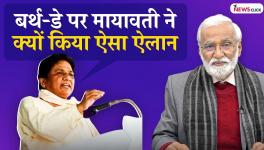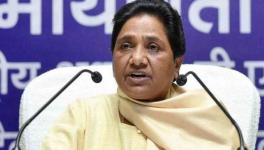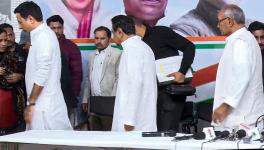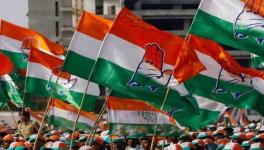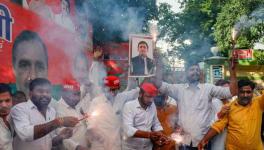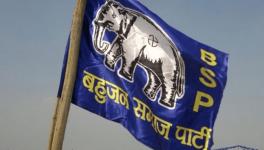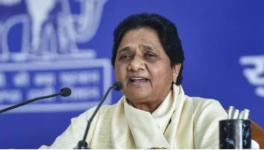Why Owaisi’s Idea of Hindu-Muslim Unity is a Pipe Dream
Representational use only.
Ever since Asaduddin Owaisi’s All India Majlis-e-Ittehad-ul-Muslimeen or AIMIM scored five Assembly seats in the Bihar elections, talk about an electoral alliance between parties that represent Dalits and Muslims has got a second wind. The AIMIM and Bahujan Samaj Party (BSP) had joined forces in the Bihar polls, and many now say this partnership will extend to Uttar Pradesh, where the Assembly election is due in 2022.
To be sure, it is Owaisi’s party which seems to have benefited somewhat from the alliance in Bihar, for the BSP has won just one seat. Yet, former chief minister Mayawati’s BSP is a force to reckon with in Uttar Pradesh. If their victories in Bihar were indeed the result of votes of Muslims and Dalits transferring to one another, it will surely have far-reaching consequences.
In post-independence India, no political force has had a hold over Muslim votes. At least, no party which has a sway over a large area can claim to represent largely Muslim’s interests. Even the AIMIM was limited to influencing the Hyderabad Lok Sabha seat, until it won seven seats in the 2014 Telangana Assembly election, two Assembly seats in Maharashtra, also in 2014, and one Lok Sabha seat in 2019 there, besides the victories in Bihar.
A political observer who had, years ago, accompanied a delegation of Muslims to meet the founder of the BSP, the late Kanshi Ram, tells me a reason why the AIMIM’s chances in Uttar Pradesh are still quite bleak. When members of this delegation asked for greater political representation for the Muslim community, Kanshi Ram asked them if they could, in turn, guarantee that “three percent of Muslim votes” would transfer to his party. It is a fact that no Muslim leader enjoyed enough support within the community to offer this reassurance. Often, some small Muslim political parties combine forces with the BSP, but these alliances are largely not electorally very significant.
Owaisi is also an outsider to Uttar Pradesh. Even if the possibility exists of an understanding or alliance between the AIMIM and the BSP, the question is, will he get the kind of captive audience in Uttar Pradesh as he got in the Seemanchal region of Bihar? If yes, it could imply a windfall for both Muslims and Dalits. The latter have enjoyed power at the provincial level and may be keen to explore a tie-up with a Muslim vote-catcher like Owaisi—but only if he can ensure Muslim votes transfer to Dalit candidates.
In his book, Indian Muslim(s) After Liberalization, Maidul Islam, who teaches political science at Oxford, writes, “...the Dalit-Muslim coalition could be built around the issue of political representation in legislatures and ministries as well. However, this… is contingent upon the numerical strength of both Dalits and the Muslims in specific states. Unlike Muslims, Dalits are relatively evenly spread over major states in India and have reserved constituencies in state Assemblies and the Lok Sabha, making them an electorally significant group. In contrast, Muslims are relatively more concentrated in the six states of Jammu and Kashmir, Assam, West Bengal, Bihar, Uttar Pradesh and Kerala...”
Naysayers would argue that even coming together will not make it possible for Dalit and Muslim parties to come to power, even at the state level. The renowned political scientist Imtiaz Ahmad calls the very belief in their electoral success a day-dream. “Some—mostly educated—Muslims mistakenly entertain the idea that a political alliance with Dalits can assail the high-caste domination of politics,” he says. He says this hope is a “gross oversimplification”, not backed by any of the prevailing political arithmetic. Muslims are 19% and Dalits 20.7% of the state population and together they make up just about 40%. In the 2017 election, the BJP won nearly 40% of the popular vote. Yet, its votes came at the cost of all other parties, including the Samajwadi Party and the BSP, both of which suffered losses of their core Yadav and Scheduled Caste voters respectively. If this trend continues, a Dalit-Muslim alliance will have slender chances to succeed.
In Uttar Pradesh, like elsewhere, the core voters of the BSP are by and large spread across the state. In only one district, Sonbhadra, do they make up 40% of the population. There are only four districts—Unnao, Sitapur, Kaushambi and Hardoi—where their population reaches 30%. In at least 36 districts, the ratio of their population is between 20% and 30%, and in the rest it is below 20%.
Dalit candidates obviously win the seats reserved for candidates belonging to Scheduled Castes. There are 18 parliamentary constituencies and 84 such Assembly seats in Uttar Pradesh. Here too, things are in line with what Ahmad just pointed to—in the 2017 Assembly election, the BSP won merely two reserved seats while the BJP, known for solid upper caste support, performed superlatively in 70 of them. In fact, BSP scored fewer seats than some of its splinter groups, the Suheldev Bhartiya Samaj Party or and Apna Dal (Sonelal), which won three and two seats respectively as part of their alliance with the BJP.
On the contrary, in 11 districts of Uttar Pradesh, Muslims make up 30% or more of the population and in 27 districts, between 10% and 30%. It would be hard to imagine Owaisi’s AIMIM weaning away the Muslims from the Congress, Samajwadi Party and other outfits enough to affect the electoral outcome. On this front, Prof Ahmad also points to statistics that show that when Muslim candidates contest from Hindu-dominated constituencies (as compared to constituencies where the Muslim population is 15% or more) they stand a better chance of winning. The lesson is loud and clear: Muslims would have a better chance of political representation in alliances between parties that represent a broad social mix.
Obaid Nasir, a Lucknow-based political analyst, does not even give much credit to the BSP-AIMIM alliance for Owaisi’s party’s victory in Bihar. He believes the AIMIM won only in those constituencies where Muslims are numerically dominant. He says, “The contribution of Dalit voters in the five AIMIM candidates who won in Seemanchal is yet to be analysed, but the general impression is that this victory is AIMIM’s own.” So, he says, there is possibility of an AIMIM-BSP alliance in Uttar Pradesh, “but it may not have a definite impact on the poll outcome in the state”.
Not only has Mayawati’s political graph touched a nadir since 2017, leaving the BSP trying to woo backward class voters and even a section of Dalit voters back into the fold, earlier this month, she removed former Rajya Sabha MP Munquad Ali from his position as head of the party in the state and put Bhim Rajbhar, an OBC, in the position instead. His removal, Nasir says, has sent a very negative signal to Muslims. Earlier, Danish Ali was seen to have been punished by Mayawati when he was removed as floor leader of the party in the Lok Sabha. He was replaced by Ambedkar Nagar Member of Parliament Ritesh Pandey. “All this may have long-term repercussions for Muslim support to BSP,” Nasir says.
Then, just weeks ago, in the thick of the Bihar election campaign, Mayawati surprised Muslims when she said she would support the BJP to defeat the Samajwadi Party, her party’s biggest rival in Uttar Pradesh. “We have decided that to defeat SP candidate in future MLC elections...any party candidate who will be dominant over the Samajwadi Party candidate will get all BSP legislators’ votes for sure,” she said, unleashing a furore among her cadre, especially her Muslim base.
It is not really clear if the BSP will seek to ally with AIMIM in Uttar Pradesh, given that the Member of Parliament from Hyderabad does not have a standing in the state’s politics. She may certainly tilt towards it if he shows interest. The ongoing political churning and polarisation has pushed many Muslims to consider AIMIM as a possible option. There are suggestions, including by Owaisi himself, that there could be an uptick in its activities in Uttar Pradesh in coming months. For all the apprehensions this raises, Owaisi does have a certain charm within the Muslim community. What he lacks in Uttar Pradesh is strong local leadership. If he does bag some good “faces” to campaign and contest, there is every chance he will bet on them.
The author is a writer and columnist. The views are personal.
Get the latest reports & analysis with people's perspective on Protests, movements & deep analytical videos, discussions of the current affairs in your Telegram app. Subscribe to NewsClick's Telegram channel & get Real-Time updates on stories, as they get published on our website.









